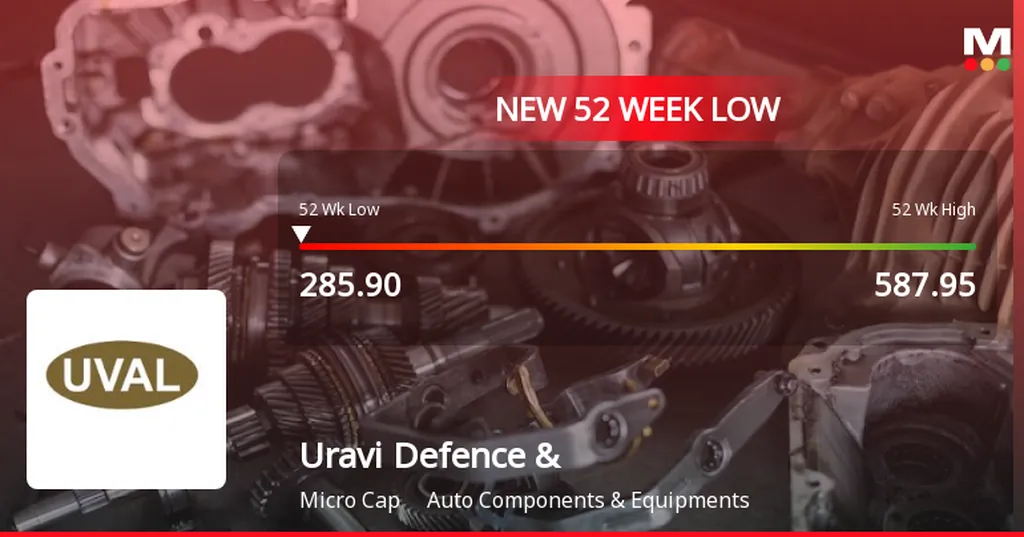Uravi Defence & Technology, a microcap player in the Auto Components & Equipment sector, has hit a new 52-week low, sparking concerns about its financial health and operational sustainability. The company’s stock has experienced significant volatility, closing at Rs 271.65, a decline of 5.81% compared to its sector peers. Over the past week alone, Uravi has seen a dramatic drop of 29.3%, with the stock opening today with a gap down of 4.98%.
The downward trend is stark when viewed against key technical indicators. Uravi is currently trading below its 5-day, 20-day, 50-day, 100-day, and 200-day moving averages, signalling a prolonged period of underperformance. This sustained decline raises questions about investor confidence and the company’s ability to navigate current market challenges.
Financial concerns are further compounded by Uravi’s declining profitability and high debt levels. The company has reported a 41.45% drop in stock value over the past year, alongside a 7.98% compound annual growth rate (CAGR) decrease in operating profits over the last five years. These figures suggest a troubling trend of diminishing returns, which could undermine the company’s long-term viability.
A particularly alarming metric is Uravi’s Debt to EBITDA ratio, which stands at 3.49 times. This high ratio indicates that the company may be struggling to service its debt obligations, a critical issue for any business, particularly one operating in a capital-intensive sector like defence and automotive components.
Despite these challenges, institutional investors have shown some confidence in Uravi, increasing their stake by 1.65% in the last quarter. They now hold 6.47% of the total shares, a move that could signal a belief in the company’s potential for recovery or a strategic play on its current undervaluation.
The broader implications of Uravi’s struggles extend beyond its own financial health. The defence and automotive sectors are increasingly intertwined, with advancements in one often driving innovation in the other. Uravi’s difficulties could signal broader challenges in the sector, particularly for companies operating at the intersection of these industries.
As Uravi navigates this turbulent period, the company’s ability to address its financial weaknesses and regain investor trust will be crucial. The defence and automotive sectors are ripe for growth, but only those companies that can adapt to market pressures and maintain operational resilience will thrive. Uravi’s journey in the coming months will be a test of its strategic agility and financial prudence.

